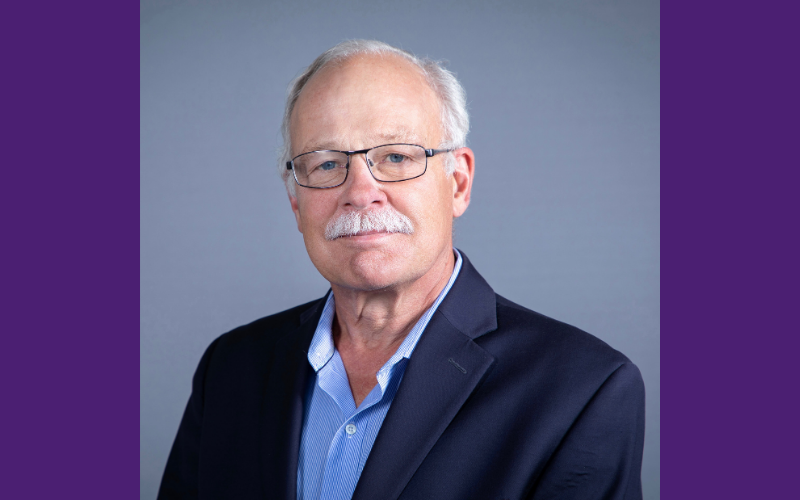Five Questions with Faculty: Professor Emeritus Gus Birkhead

Guthrie (Gus) S. Birkhead, MD, MPH is Emeritus Professor in the Department of Epidemiology and Biostatistics. Until 2015, Dr. Birkhead worked at the New York State Department of Health for 27 years. Throughout his career, Dr. Birkhead worked in the Bureau of Communicable Disease Control, was the director of the NYSDOH AIDS Institute and director of the NYSDOH Center for Community Health (CCH), which included the state’s communicable disease, chronic disease, maternal and child health, nutrition and local public health services programs. Dr. Birkhead was also Deputy Commissioner and Director of the Office of Public Health, which included responsibility for the AIDS Institute, the CCH, the Center for Environmental Health and the Wadsworth Center Public Health Laboratory.
How did you become interested in infectious disease epidemiology?
My interests in infectious diseases, and in medicine and public health in general, began when I lived with my family in Pakistan for three years in the 1960s when I was growing up. There I saw the impact on people of poverty and of diseases like polio, smallpox, measles, rubella and diphtheria. In high school and college, I became interested in biology and I ended up going to medical school. Following medical school, I went into internal medicine while maintaining an interest in infectious diseases and developing a new interest in prevention.
The experience that changed my career course from clinical medicine to epidemiology and public health was working in a refugee camp in Thailand in the 1980s. There I saw the importance of protecting and improving health through public health and prevention measures directed at the whole population. After that experience, I got an MPH and worked for three years with CDC in the Epidemic Intelligence Service and preventive medicine residency, again with a focus on infectious diseases.
I came to the New York State Department of Health (NYSDOH) in 1988 where I started out leading the communicable disease and immunization programs. While I eventually became involved in many aspects of public health, I remained interested in infectious diseases throughout my career, leading the NYSDOH AIDS Institute and being a lead person at NYSDOH in responding to the anthrax outbreak and smallpox scare after 9/11, as well as measles, SARS, the H1N1 pandemic influenza, and Ebola, among other public health emergencies.
What have been the most rewarding activities in your public health career?
The most rewarding activities for me have been those that have clearly prevented or reduced morbidity and mortality in the population. A prime example was the effort to reduce mother-to-child transmission, which I lead in the late 1990s and early 2000s at the NYSDOH. Through a combination of programmatic and regulatory efforts, the number of newborns infected with HIV from their mothers in New York was reduced from about 450 per year to zero or one per year today. Another longer-range activity was the Prevention Agenda for the Healthiest State, New York’s state health improvement plan. Developing the Prevention Agenda involved engaging public health partners across the spectrum of public health agencies, community organizations, academia, business, the media and others. The plan is a blueprint for New York’s prevention efforts and is accessible on the NYSDOH website. I would encourage all students, regardless of your interests in public health, to take a look at it.
Based on your experience working at the New York State Department of Health, how do you anticipate COVID-19 vaccination efforts will pan out?
The best-case scenario is that COVID-19 vaccinations become widely available and accepted, and we are able to achieve levels of immunity sufficient to dramatically reduce transmission in the coming months. There are many challenges to achieving that goal including assuring a growing and uninterrupted vaccine supply, figuring out the logistical challenges, and overcoming individuals’ hesitancy to get vaccinated. Achieving health equity to assure that racial and ethnic minorities, who have been disproportionately affected by the pandemic, are vaccinated is the principle public health challenge that we face. New viral variants that may evade the vaccine may present significant additional challenges. Even in the best-case scenario, SARS-CoV-2 and related viruses are likely to be around for the foreseeable future.
What research projects are you currently working on?
As an emeritus faculty member now, I am primarily involved on dissertation committees assisting students with their research. Also, the newly formed Center for Collaborative HIV Research in Practice and Policy (CCHRPP), which I head, has affiliated faculty members from the School, the NYSDOH, Rockefeller College and SUNY Downstate Medical University who are heavily engaged in many areas of research. Topics include not only HIV research, but also research into related diseases (hepatitis C, sexually transmitted diseases), risk factors (poor mental health, substance use), and populations (racial and ethic minorities, drug users). These faculty have also been heavily involved in the COVID response, which has benefited from the many lessons learned from combating HIV. Students are invited to participate in the regular CCHRPP noontime seminars.
Do you have any advice for students who are interested in pursuing a career in public health with a focus on infectious diseases?
Students interested in public health approaches to infectious diseases should take advantage of the unique opportunity provided by the partnership between the School of Public Health and the NYSDOH. I recommend that interested students do an internship on an infectious disease topic at the NYSDOH. Students will learn on-the-ground public health practice and get involved in cutting-edge infectious disease prevention and control programs at one of the premier state health departments in the nation. Few other schools of public health offer as much internship experience as UAlbany. Take advantage of it.


